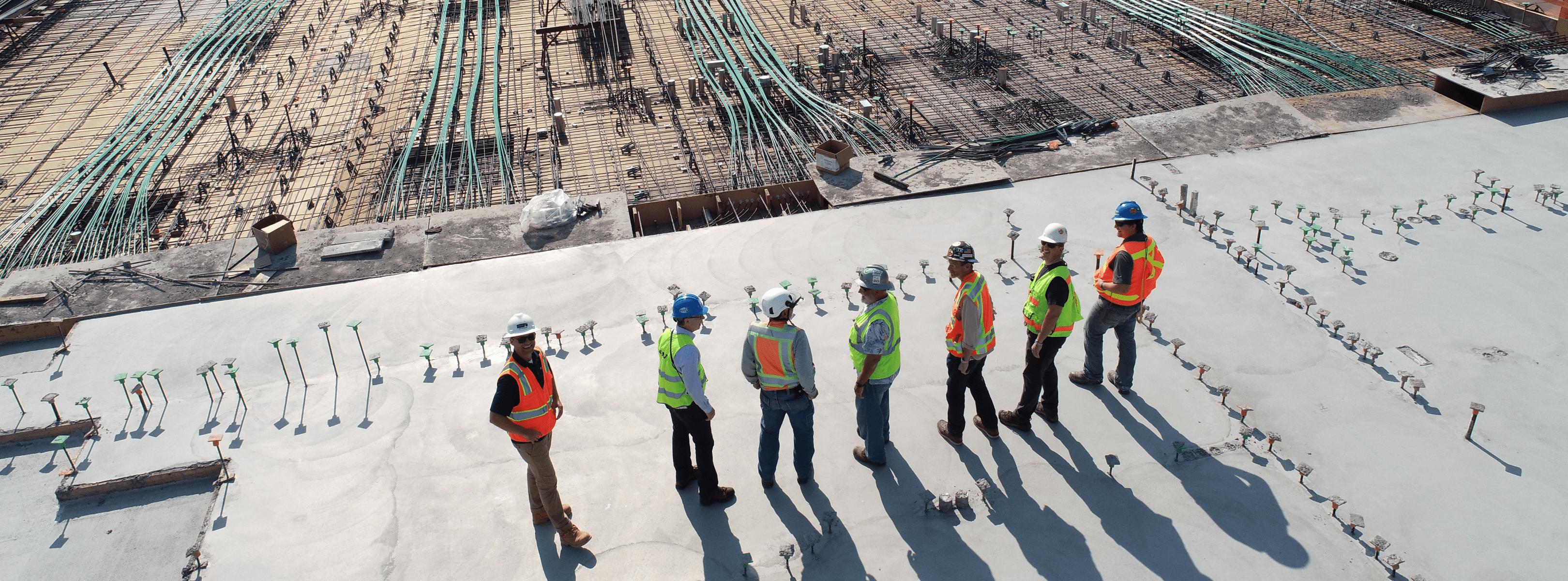There are plenty of reasons why drones have become a go-to tool on construction sites. As with most aerial applications, it’s all about the data: gathering images and videos for mapping projects, reporting progress updates and gaining insights through advanced analytics.
But it’s not as simple as getting a drone and sending it on its way. Although the technology is in many cases making construction sites safer places to work, there are still risks involved and precautions that need to be taken while flying.
Follow the FAA’s Rules
Chief among the steps that need to be taken is ensuring your pilot is operating within the FAA’s Part 107 rules for commercial drone flights. These include making sure that your construction site missions:
- Use drones weighing less than 55 pounds, including payload
- Operate in Class G airspace
- Maintain visual line-of-sight with the aircraft
- Are below 400 feet or at most 400ft above the structure you are surveying.
- Take place only during daylight or civil twilight
- Do not fly directly over people
- Do not exceed speeds of 100 mph
You can read the FAA’s Part 107 rules in full, here.
Currently, if the mission you’re planning will contravene any of these rules, you’ll need to apply for an exemption.
General safety tips
Aside from flying within the rules, there are a bunch of standard safety tips that apply to all commercial missions, whether or not they are on a construction site.
Keeping on top of these at all times is an important part of your risk management. They include:
Pre-flight checks
There are several things your pilot should do before take-off. The first part of any pre-flight check should be ensuring that the drone is safe and ready to go.
This means checking its battery levels, making sure all the necessary updates have been installed and checking for signs of damage.
Your pilot should also double-check the connection between the controller and the drone, which can sometimes be disrupted by the immediate environment. It’s also important to make sure everything is properly calibrated, including the controller and the drone’s Inertial Measurement Unit (IMU).
Next are the situational checks. Before taking off, the area should be scouted for safe take-off and landing areas. Colleagues or people nearby the impending flight should be alerted, and the weather forecast should be checked to make sure it’s suitable for the operation you have planned.
Finally, it’s time to plan the flight path. This will help you capture the data you need as quickly as possible, and also open your eyes to any visibility problems or other issues that might crop up along the way.
You can read our pre-flight checklist in full, here.
Construction-specific safety tips
Construction sites are a unique working environment. There are a few ways to manage risk at your worksite while using drones.
The first is to take extra care and ensure that there are no structures or machines obstructing your flight paths. This needs to be done before every flight, whether or not the site has been flown on before.
Construction sites are dynamic environments. Things move around and new obstacles can appear quickly. Take, for example, an incident at a worksite in England back in 2017.
A drone crashed into a static crane because the pilot used a preset flight path that had been finalized before the crane had been set up.
Pre-programmed flight paths are efficient and necessary when gathering data on construction sites, but routes can be impacted overnight, so always be sure your pilot conducts checks before taking off on the day.
Because of the unique risks that come with operating a construction site, it’s also worth preparing for the worst. Have an emergency procedure ready in case of an accident and ensure all drone operators know what to do in case something goes wrong.
You can find out more about utilizing DroneBase’s construction drone services to gather aerial data on your construction site, here.





.jpg?width=360&name=Banner%20Templates%20(7).jpg)